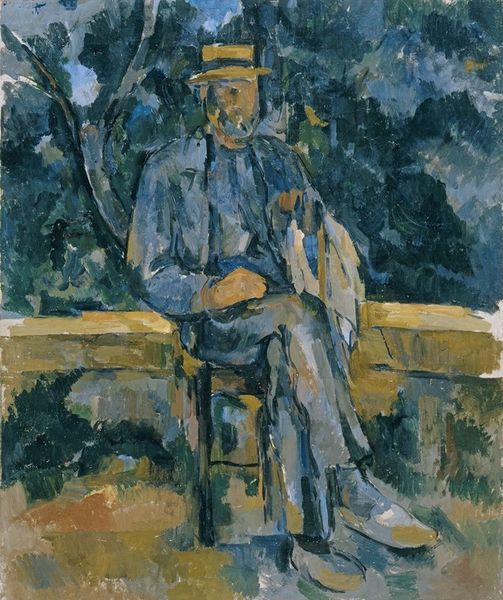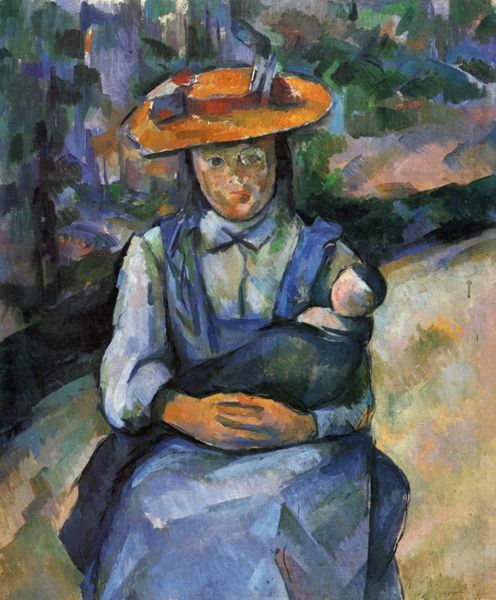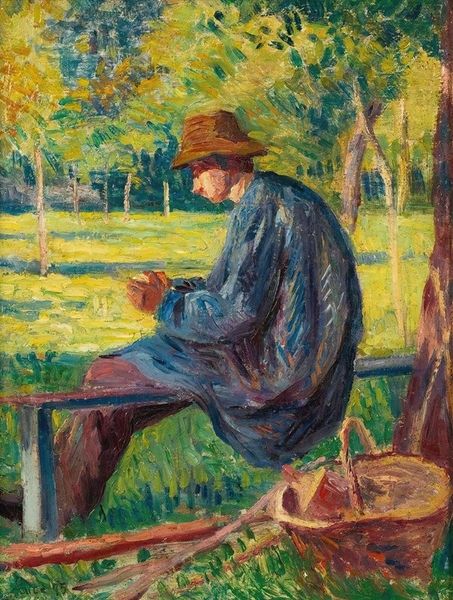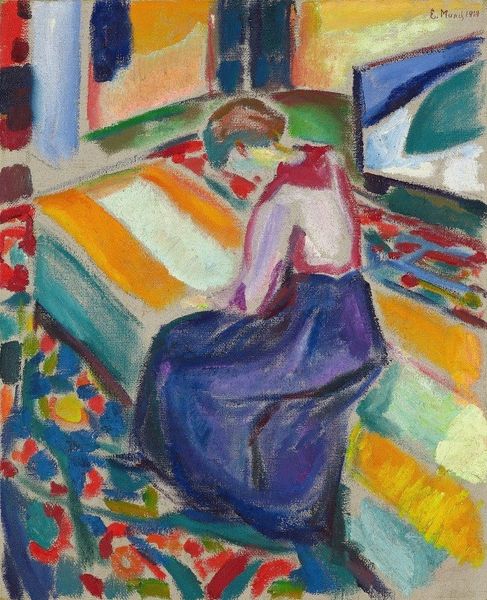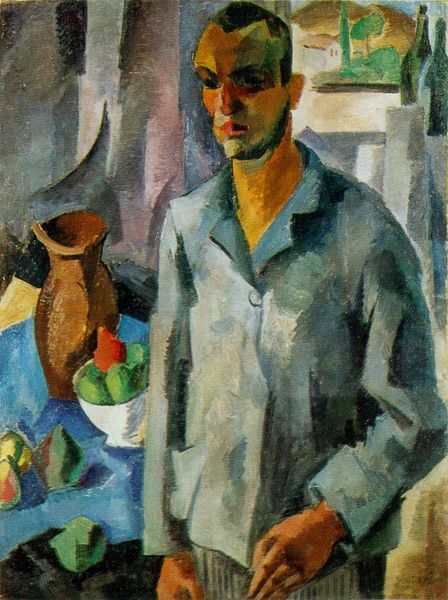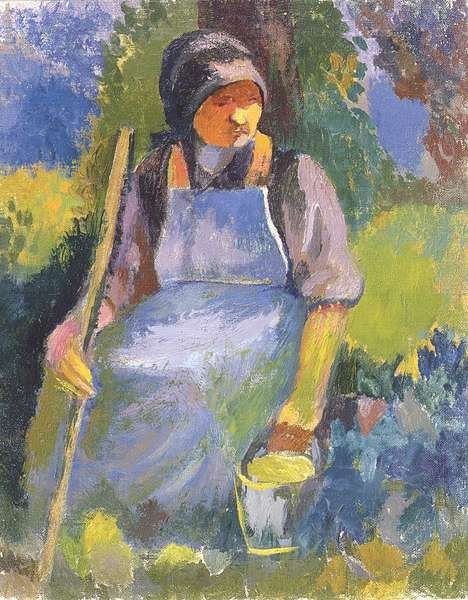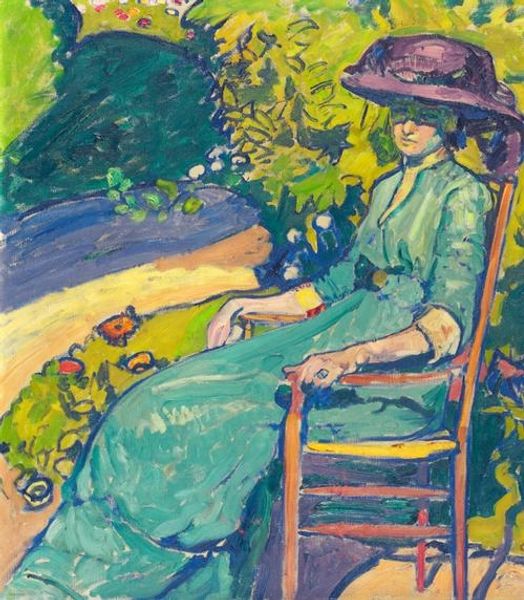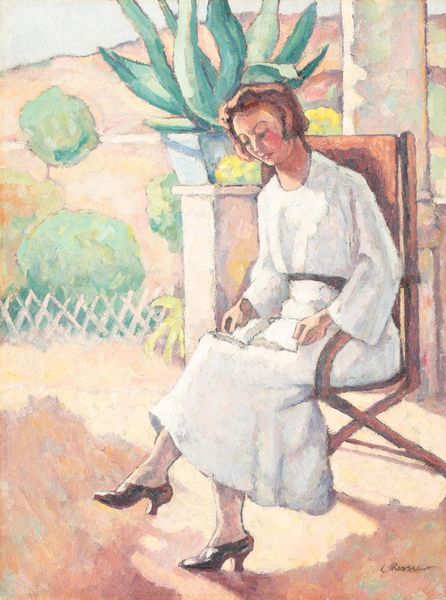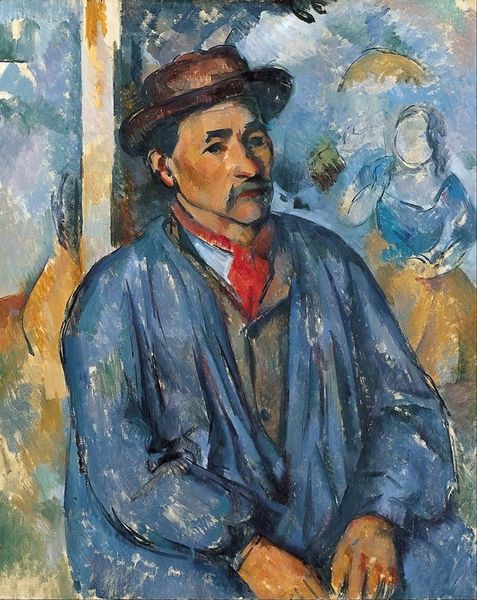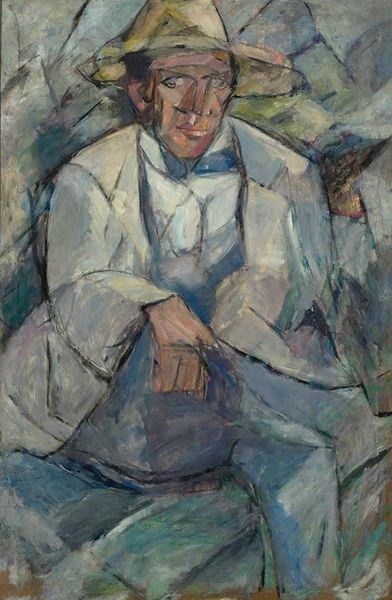
painting, oil-paint
#
portrait
#
fauvism
#
painting
#
oil-paint
#
landscape
#
impressionist landscape
#
figuration
#
possibly oil pastel
#
oil painting
#
expressionism
#
genre-painting
#
post-impressionism
#
expressionist
Copyright: Public domain
Editor: So, this is Paul Cézanne’s "The Old Gardener," painted around 1906 using oil. I'm immediately struck by the colors; they’re so vibrant and almost fauvist. What’s your interpretation of this work, looking at it through a historical lens? Curator: It's interesting you bring up Fauvism, which came a bit later, and took aspects from the Post-Impressionists! Cézanne was grappling with representation itself, moving away from purely depicting reality. Instead he aimed to portray something deeper about the structure and perception of the world. Look how he situates the figure, perhaps a laborer, between the built structure of the wall and the unruly abundance of nature. Does that suggest anything about labor, its value, or position in French society at the time? Editor: I see what you mean. It almost feels like the gardener is both confined by the wall and supported by the natural world. Perhaps a commentary on the working class's reliance on both society and the land. What about the almost crude brushstrokes? Curator: Exactly. And those brushstrokes – notice how they create volume and form, not through traditional shading, but through blocks of color. Cézanne’s departure from academic painting, in a time when societal hierarchies were challenged and new technologies emerged, parallels a shift in understanding the relationship between the individual, work, and the environment. Do you think this work aimed to legitimize this laborer and grant dignity? Editor: That's a compelling argument. The gardener’s presence is powerful despite the simple composition, isn't it? The dignity is palpable. Curator: Indeed. This piece reflects a critical historical transition. It's a bridge between tradition and modernity, not just aesthetically, but in how it acknowledges and elevates the working class figure within the art world's narrative. Editor: I didn't consider how the changing artistic style might reflect a changing societal view of labor. Thank you for that insight. Curator: It's fascinating how art encapsulates these evolving cultural values. Looking closely reveals that there are other ways of understanding it.
Comments
No comments
Be the first to comment and join the conversation on the ultimate creative platform.
